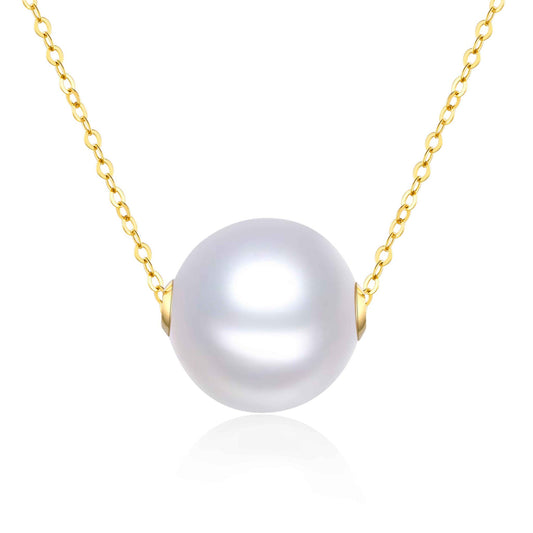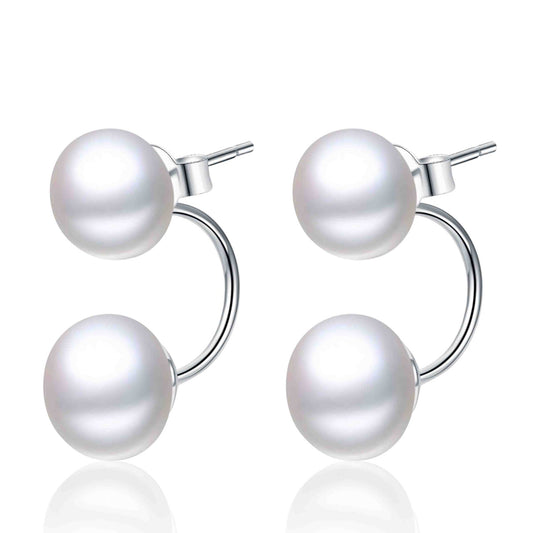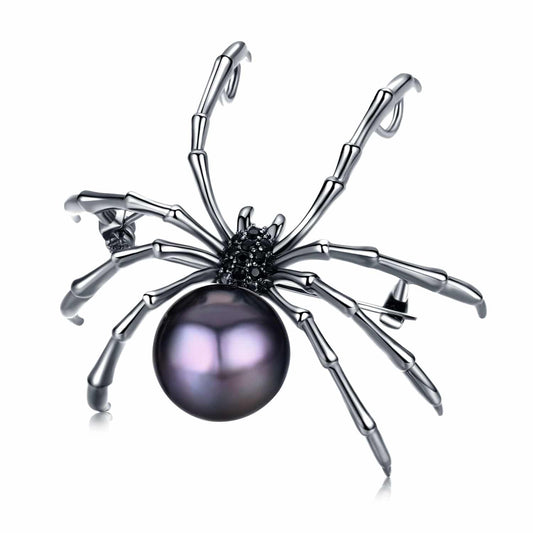
What Are Blister or Mabe Pearls?
Share
Also called blister pearls or half-pearls, Mabe pearls are grown against the inside of the oyster’s shell, rather than within its tissue. These pearls typically have a hemispherical shape with a flat back. While the pearl is still in the oyster, it is called a blister pearl. After reworking, it is referred to as a Mabe pearl.
Small blister pearls are commonly found in nature, and therefore not very expensive, except when they are produced by certain rare mollusk species. Mabe pearls are beautiful, making them attractive in jewelry. They come in a wide range of vibrant and exotic colors, ranging from light pink to bluish shades with hues that gleam rainbow-like. Pink Mabe pearls with golden swirls are extremely rare.
How Blister Pearls Are Cultivated
Cultured blister pearls are nucleated with a hemispherical nucleus which is implanted against the oyster shell beneath the mantle tissue. Some pearl farmers even glue the nucleus onto the shell. The mollusk is returned to the water. The mollusk secretes layers of nacre which covers the nucleus to form a hemispherical pearl with a flat back. After 12 months to six years – depending on the type of mollusk and the desired size – the mollusk is harvested.
How Mabe Pearls Are ‘Worked’
To make a Mabe pearl, the blister pearl needs some work to be done. First, a circle-bit drill is used to cut the blister pearl from the mollusk shell. The nucleus is removed from the pearl, and the hole is filled with resin. The back of the pearl is capped with a piece of mother-of-pearl to complete the Mabe pearl.
If you look closely, you can see where the Mabe pearl was sealed, but most jewelry designs hide the seam.
Jewelry Made from Mabe Pearls
Jewelers secure Mabe pearls in settings which require a hemispherical shape that conceals the flat back. These attractive pearls are usually found in rings, earrings, or set within a pendant. You won’t find Mabe pearls on a string-of-pearls necklace or bracelet.
Here are some examples of Mabe Pearls from our shop:
Golden Mabe Pearl Necklace:
Golden Mabe Pearl Earrings:
The Different Types of Mabe Pearls
Generally, blister pearls are grown in four types of mollusks:
The Penquin’s Wing Oyster (Pteria Penguin)
Pearls from the penguin’s wing oyster make up about 75% of all Mabe pearls on the market. These pearls are produced in the Ryukyu Islands of Japan, Indonesia, Australia, and the Philippine Islands. The oyster gets its name from the shape of the mollusk – an elongated wing or fin that extends from the lip. The penguin’s wing oyster produces silvery-gray blister pearls with overtones of pink, green, violet, and blue iridescence.
The Rainbow-Lipped Pearl Oyster (Pteria Sterna)
Mabe pearls from the rainbow lipped pearl oyster are pretty rare. This oyster gets its name from the intense iridescent colors it produces. These pearls are grown in the Gulf of California, and specifically in Baja California. Colors range from light to medium gray with intense flashes of pink, green, violet, and blue iridescence.
White-Lipped and Gold-Lipped South Sea Pearl Oysters (Pinctada Maxima)
The gold-lipped and white-lipped saltwater oysters are found off the coast of Northern Australia and the Philippine Islands. These oysters produce large blister pearls of 10mm and larger. Each mollusk can produce 8 to10 blister pearls each, and they need 10 to 12 months to grow. Pearl colors are primarily silvery-white and golden.
The Abalone Mabe Pearl (Haliotis Iris)
The abalone Mabe pearl can be found in New Zealand and it usually has a round, drop, or oval shape. Colors are typically brilliant blue with intense flashes of pink, green, and gold iridescence. These blister pearls take about 18 months to grow, and average sizes range from 9-13mm, although some pearls get as big as 20mm.
Get in touch with Timeless Pearl if you want to learn more about Mabe Pearls.





